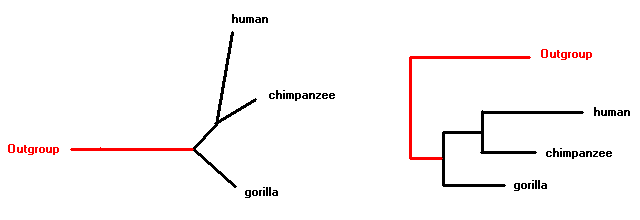



Next: String representation of a
Up: Phylogenetic trees
Previous: Phylogenetic trees
Contents
Unrooted phylogenies
Since the data for the ancestors are usually missing, the
phylogenetic trees produced by PHASE are only schematic trees
comprising a set of nodes linked together by branches.
Terminal nodes, usually called tips or leaves, are
known sequences of existing organisms or contemporary taxa.
Internal nodes are bifurcation points between genetically isolated
groups.
The analytical techniques used in PHASE result in the
inference of an unrooted, strictly bifurcating tree.
The location of the common ancestor of all the species under study
-- i.e.,
the earliest point in time -- cannot be identified
by our inference method. An unrooted, strictly bifurcating tree can be
seen as a kind of network where all the internal nodes are linked to
exactly three others nodes, either internal nodes or leaves.
To produce a neat tree-like structure, one or more outgroup
species, known to be genetically isolated from all the others, should be used
to root the tree (see figure 2.1).
Figure 2.1:
Two equivalent representations of the same unrooted tree
|
|




Next: String representation of a
Up: Phylogenetic trees
Previous: Phylogenetic trees
Contents
Gowri-Shankar Vivek
2003-04-24
